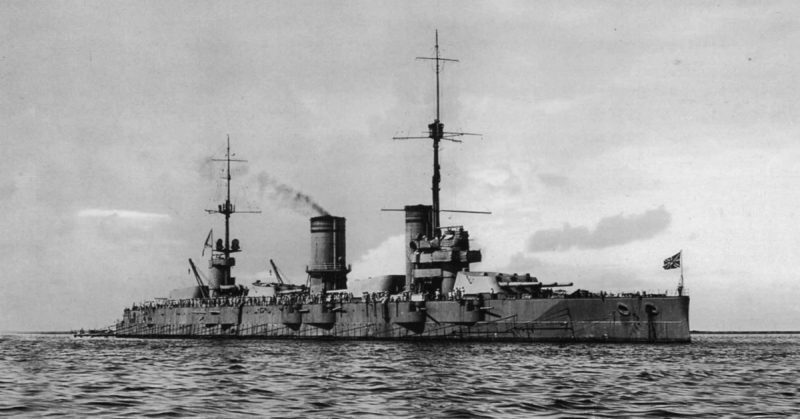In the autumn of 1918 in Europe, the battles of the First World War continued. By this time the outcome of the war was predetermined – despite the stubborn resistance of the German army, they had lost the war. At the same time, an intense civil war was taking place in Russia.
In 1919, the British squadron was in the Baltic Sea. Initially, the British, in view of the temporary weakness of their fleet, did not plan to attack Petrograd and Kronstadt. The British were well aware of the heavy guns of coastal forts and the huge number of mines that were in the Gulf of Finland. But even the past events of the Crimean war did not stop Her Majesty’s adventurers from invading the territory of the Finnish Gulf and conducting military operations against the navy of the Soviets.
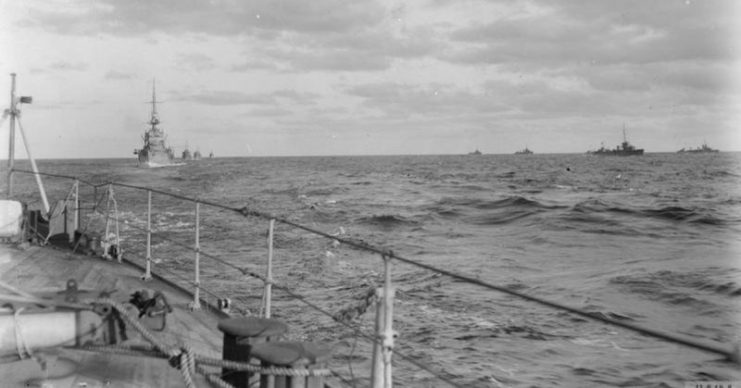
By the end of 1918, most of the Baltic Fleet of Russia, because of repression (1917-1918), felt an acute shortage of officers and supplies. The fall of general discipline and the demoralization of personnel reduced all combat resources. Also, many ships were in poor technical condition and were absolutely unsuitable for war.
On November 15, 1918, on the basis of existing technology and command resources of the Russian Imperial Navy, an active detachment (DOT) was created. It included the battleships Petropavlovsk and Andrey Pervozvanny, the cruiser Oleg and seven submarines, eight destroyers, 25 aircraft, and a number of auxiliary vessels.
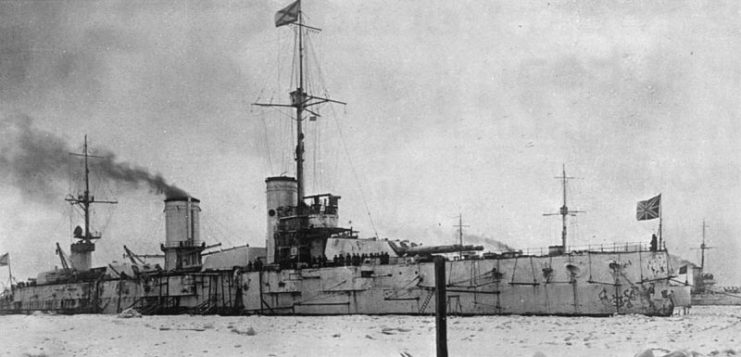
In order to strengthen their defensive lines, the Soviets planned to install additional minefields near Kronstadt. On November 19, 1918, during the installation of the second line of mine defenses in the Gulf of Finland, a Finnish coastal battery fired on the Russian minelayer Narova. As a result, Narova received two hits and some of the mines were thrown overboard. On November 20, in response to this, the fort Krasnaya Gorka destroyed the Finnish battery. At the same time, works on installing minefields successfully ended on November 21. Some historians call these events the beginning of the “Civil War on the Baltic Sea”.
Then, on December 5, 1918, near the island of Nargen (Nayssar) not far from Tallinn, after hitting a mine the British light cruiser Cassandra was sunk. As a consequence, the leadership of the Red Army planned to leave the detachment of warships in place to attack Tallinn and to confront the British. However, contrary to all expectations, only two destroyers, Avtroil and Spartak, went on the raid (non-simultaneously). On December 26, Spartak successfully shelled the islands of Aegna and Naissaar. But when retreating, the destroyer got stuck in shallow water and was eventually captured by the British.
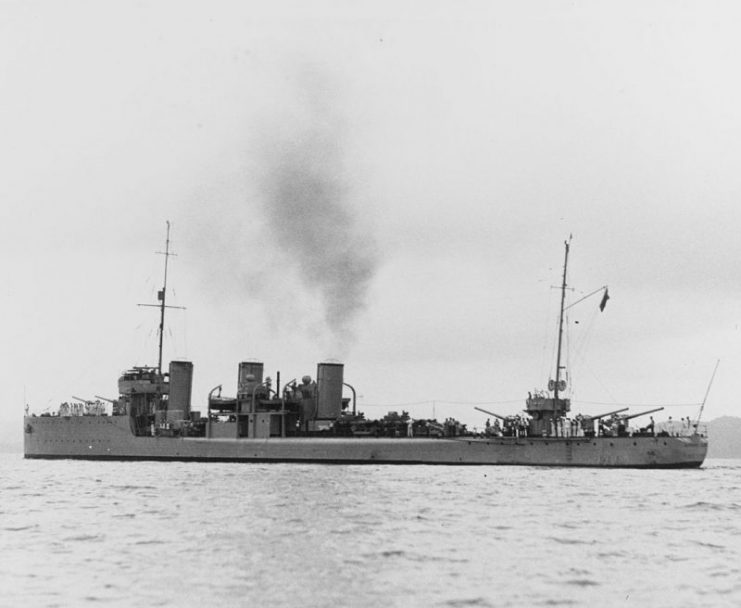
The last radiogram sent from the Soviet destroyer stated:
“Everything is lost; we are persecuted by the English”
The next day, on December 27, the destroyer Avtroil was off the island of Mohni (Ekholm) and was attacked by British ships. Having received serious damage, the Soviet destroyer repeated the fate of his predecessor and it too was captured. Both trophy destroyers eventually transferred to Estonia. As a result, within two days, the “Workers’ and Peasants’ Red Fleet” lost two of the Soviet’s newest destroyers and 251 (according to other sources 244) sailors.
After this, an enforced truce occurred between the warring sides. However, before that, an armed conflict between the Estonian landing force and the Soviet troops occurred. The reason for this was a severe winter period, as a result of which the Gulf of Finland was blocked by ice. But as soon as the cold receded, in May 1919, Yudevich’s offensive began on Petrograd. The Baltic detachment supported the Red Army and entered into numerous conflicts against the British naval forces.
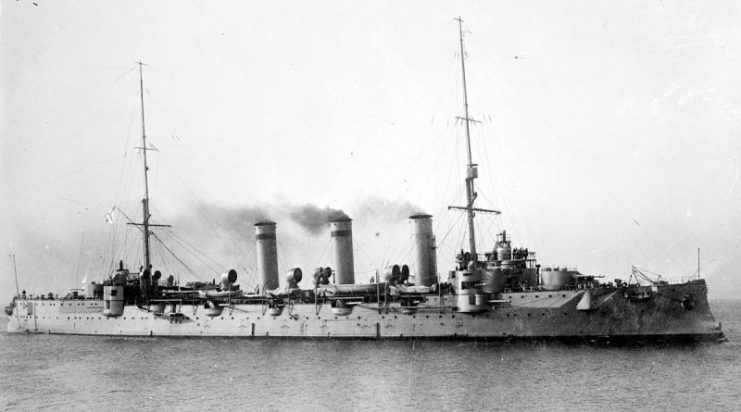
May 15, 1919, saw British ships try to land landing forces in Luga Bay and Koporsky Bay. But on May 16, due to the destruction of their cruiser by a Soviet mine, they had to retreat.
On May 18, the destroyer Gabriel, covering four auxiliary vessels in Koporsky Bay, alone fought off four attacking British destroyers. At the same time, despite the constant enemy shelling, Gabriel managed to remain afloat and inflict heavy damage on one of the British destroyers. On 28 and 31 May, small clashes took place in this area.
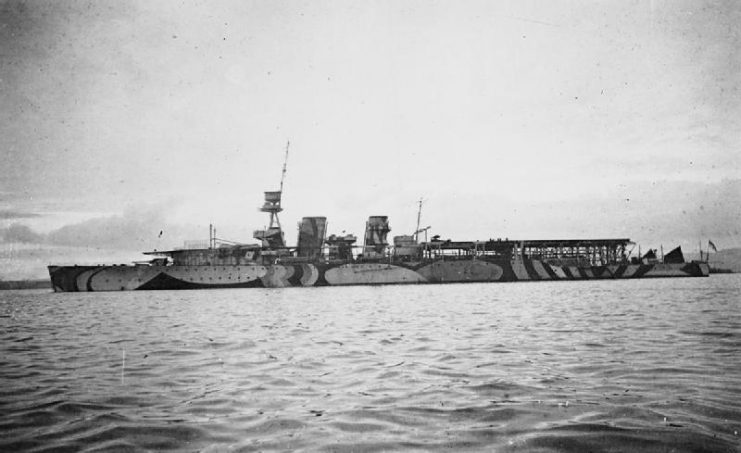
On May 31, the Soviet destroyer Azard, acting as a lure, was able to bring eight enemy destroyers under the fire of the battleship Petropavlovsk. On June 4, while still in the Koporsky Gulf, destroyers Azard and Gavriil entered into a confrontation with the submarine L-55.
Thanks to successful maneuvering, the Soviet destroyers managed to maneuver away from enemy torpedoes and take advantage of a fortunate combination of circumstances. The submarine could not be kept at depth and partially rose to the surface.
Taking advantage of the moment, the Azard attacked her, inflicting damage. Although evading the attack of the Soviet destroyer, L-55 was caught by the sea’s current and became ensnared in a British minefield. As a result, the whole crew was killed and the boat lost.
In parallel with these events, on 13 June, at the fort Krasnaya Gorka, there was an uprising against Soviet power. However, by noon on June 17 the uprising was suppressed. A day earlier, on June 16, during a trawling mission, two British minesweepers exploded and sank.
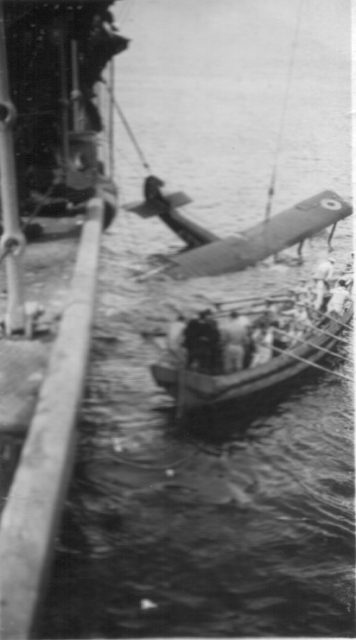
On June 18, the British struck back. A British Coastal Motor Boat, armed with a 45-centimeter torpedo, managed to pass unnoticed to Tolbukhin lighthouse. At 4 o’clock in the morning from a short distance, it launched a torpedo at the Soviet cruiser Oleg. Due to lack of discipline and coherence in the crew, the cruiser sank after 12 minutes.
From June 22, British aircraft launched systematic raids on Kronstadt. At the same time, there was increased activity from Soviet submarines. This led to new clashes.
With the aim of putting out of action all combat-ready Soviet ships (in particular two battleships), the British command launched a combined naval and air operation. The operation was conducted on the night of 17 to 18 August. According to aerial reconnaissance, at this time in Kronstadt there were two dreadnoughts, Rurik and Diana, 4 submarines, the training ship Memory of Azov, and a couple of auxiliary vessels.
The British attacked with seven Coastal Motor Boats: SMB-24, 31, 62, 72, 79, 86, 88, 4. Before the attack, 12 British aircraft began bombing the port as a distracting maneuver.
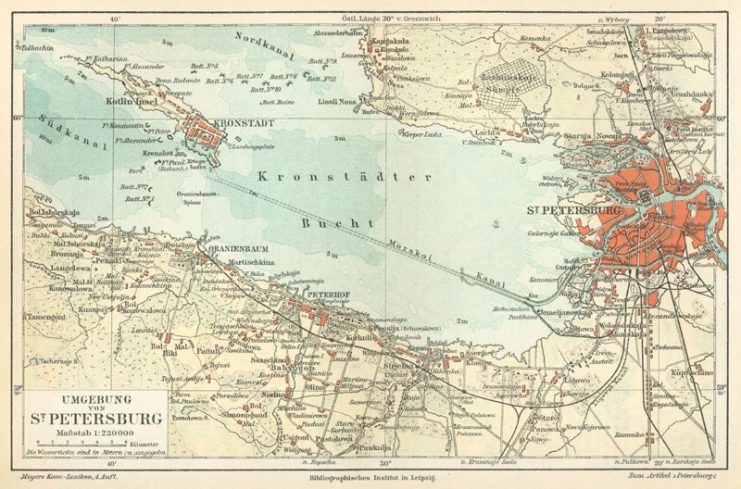
During the 20-minute attack, both belligerents suffered losses. The loss of British forces amounted to 3 sunk boats and 5 damaged, 15 officers and non-commissioned officers were killed, 9 more were taken prisoner. Soviet naval forces lost the training ship Memory of Azov. As a result of heavy damage, the battleship Andrei Pervozvanny was put out of action.
At night on October 21, the “Long Nose” battleship Gabriel, Azard, and the destroyers Constantine and Freedom found themselves in a British minefield. As a result, only “Azard” managed to return to the port, with the other ships were sunk.
During the course of 1919, there were many confrontations between the British and Soviet forces in the Baltic Sea.
On January 16, 1920, the blockade of the Soviet ports was lifted. In February 1920, a peace treaty was signed with Soviet Russia and Estonia. (Later with Finland and Latvia). In April, in connection with the clarification of the political situation in the region, all military operations by the Royal Navy in the Baltic Sea were stopped.
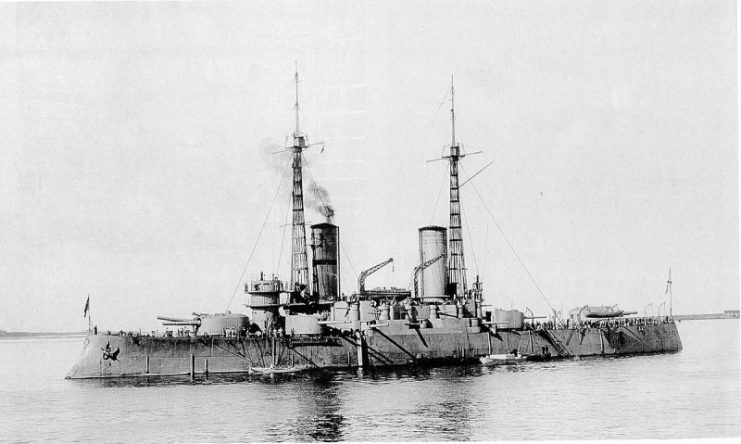
From December 1, 1918, to December 31, 1919, the British fleet lost 6 warships (1 light cruiser, 2 destroyers, 1 submarine, 2 minesweepers), as well as 3 auxiliary vessels, 8 torpedo boats and 37 aircraft. 36 combat ships and boats, 25 auxiliary vessels were damaged.
The loss of the Soviet fleet amounted to 8 ships (1 cruiser, 5 destroyers, 1 sentry, 1 training ship), five of which were sunk and three captured. In addition, 4 ships received serious damage. The battleship Andrew Pervozvanny, after sustaining damage, was never used again.
The ships of the British fleet were based at the Finnish ports until the end of the civil war in Russia, but they did not enter battle again. The war in the Baltic, as a result, did not bring the expected results, but it is considered a “combat baptism” of the new Baltic Fleet.
During the Second World War, English sailors would visit the Soviet ports of Murmansk and Arkhangelsk, but this time as allies.
